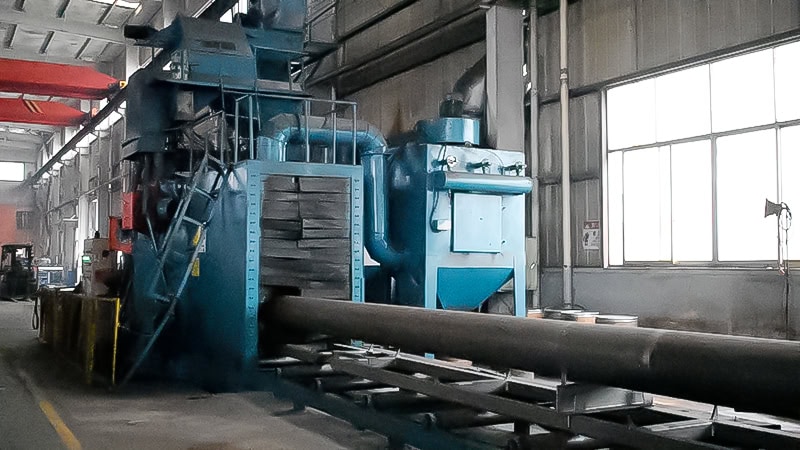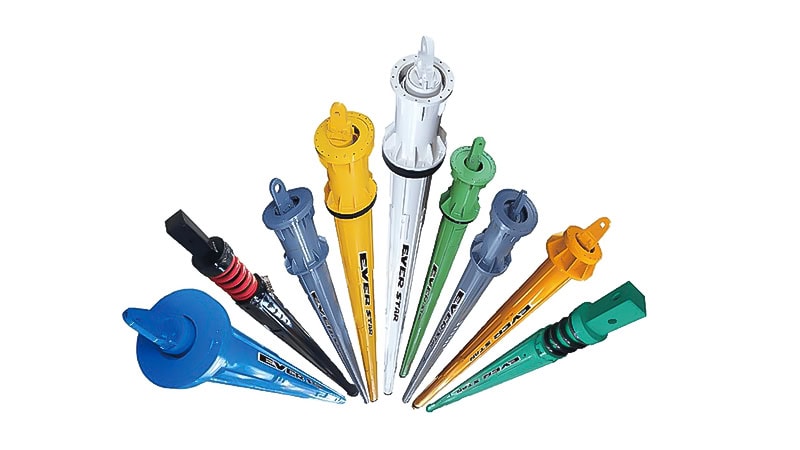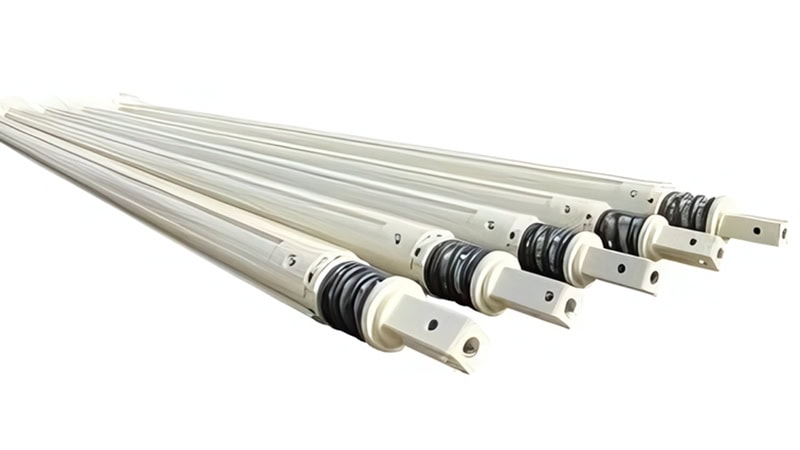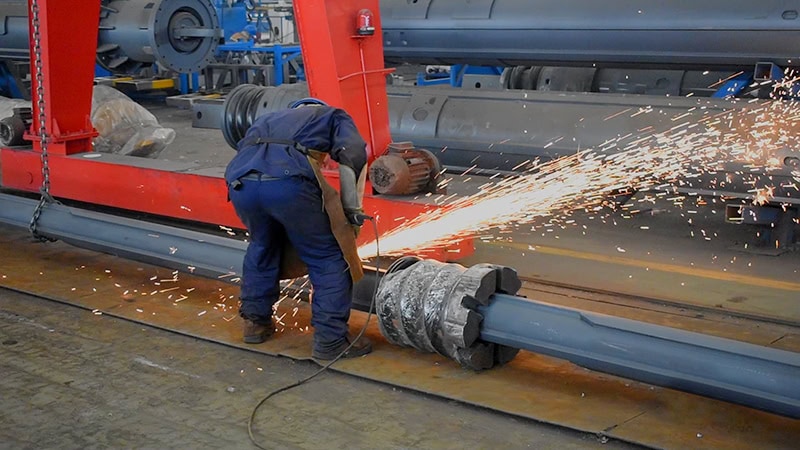
Key Takeaways
- Choosing the right Kelly bar type and quality materials boosts efficiency and equipment longevity.
- Durable design with precision machining and effective locking systems helps minimize wear and boost efficiency.
- Regular maintenance and inspections prevent costly breakdowns and ensure the extension of Kelly bar service life.
- Matching Kelly bars to drilling rigs’ specifications and project needs ensures safe, reliable, and effective operations.
Kelly bars are used in piling and drilling jobs that involve deep holes or large diameters. Choosing the right type, such as an Interlocking, Friction, or Multi-Locking Kelly Bar, helps you work more efficiently and prevents extra wear on your equipment.
When choosing, focus on material quality, heat treatment, design, maintenance, and how well it matches your rig and site conditions. These factors affect wear resistance, strength, and overall durability to keep your Kelly bar in optimal working condition.
In this article, we go over five elements Everstar’s expertise recommends checking. Each one helps make sure your Kelly bar delivers torque, lasts longer, and adapts with versatility to changing site conditions.
Why Kelly Bar Durability Matters in Drilling Operations

The Kelly bar plays a crucial role in connecting your rotary drive to the drilling tool, transferring torque to cut through soil and rock. Its telescoping design adjusts length for drilling at great depths and diverse foundation projects. Reliability and craftsmanship ensure smooth, lasting performance.
Role of the Kelly Bar in Drilling Operations
During drilling, standard kelly bars withstand constant pressure and twisting forces. If it’s not strong enough, it may bend or break, risking safety and causing work stoppages. A durable bar keeps torque steady, allowing the drill bit to perform efficiently in tough conditions.
Impact of Kelly Bar Wear on Project Costs and Downtime
Using ahigh-quality Kelly bar helps drilling rigs maintain accuracy and operate smoothly, even under pressure. It minimizes wear-related failures, reduces maintenance needs, and cuts repair costs, keeping your project on schedule and your operations running efficiently.
Factor 1 – Material Quality and Heat Treatment

Significantly improving the Kelly bar’s lifespan and performance starts with using the right materials and applying effective surface treatments. High-quality substances reduce breakage, minimize downtime, and maintain efficient drilling.
Importance of High-Strength Steel Alloys
Steel alloys like 35CrMo, 30CrMo, ZT600, and Q550 deliver higher strength and the ability to resist bending under heavy loads. This ensures your Kelly bar maintains its shape, avoids failure, and performs reliably during demanding drilling operations without costly repairs.
Shot Blasting to Improve Durability
Shot blasting is a surface treatment process that strengthens and cleans the steel. By bombarding the material with high-speed steel shots, the process relieves surface stresses, improves fatigue resistance, and creates a uniform texture that enhances coating adhesion. As a result, Kelly bars become more resistant to cracking, wear, and long-term operational stress—extending service life while reducing the risk of unexpected failures.
Factor 2 – Design and Construction Features

Design and construction quality have a direct impact on wear resistance and operational efficiency. Everstar Kelly bars are built to deliver consistent torque, long-term longevity, and adaptability across a wide range of drilling depths and soil conditions.
Interlocking vs. Friction Kelly Bars
Interlocking Kelly bars utilize mechanical keys to transfer torque, offering higher stability and improved efficiency in challenging soils. On the other hand, Friction Kelly bars rely on contact between the bar sections to transmit torque. While they don’t provide the same level of torque transfer as interlocking types, they are simpler in structure and more suitable for projects in moderate ground conditions.
Section Length, Tube Construction, and Dimensional Accuracy
Short or uneven sections increase joint stress and wear. For Kelly bars, most manufacturers commonly use welded steel tubes, as this method provides strong joints and reliable performance when properly fabricated.
While a few factories use seamless tubes, the key factor is precision machining of both the inner and outer sections. Proper length and construction boost strength, reduce vibration, and limit fatigue.
Factor 3 – Wear Resistance and Protective Coatings

In harsh drilling conditions, Kelly bars stay reliable thanks to their wear resistance. Reinforced components and protective coatings reduce surface damage, lower maintenance, and extend service life.
Wear-Resistant Key Plates and Outer Keys
Key plates and outer components are exposed to constant friction during drilling. Using wear-resistant materials, such as hardened steel, and applying treatments like heat hardening or surface polishing helps minimize abrasion and deformation, keeping the locking system secure and efficient.
Factor 4 – Maintenance and Inspection Protocols

Proper drilling tool care through regular maintenance and inspections extends the Kelly bar’s life and prevents costly breakdowns. Consistent protocols help manage early wear, ensure safer operation, and maintain performance in demanding conditions.
Routine Visual Inspections and Maintenance Scheduling
Check for cracks, deformation, or loosened joints every 400–600 working hours, especially on interlocking Kelly bars. Inspect areas exposed to high crowd force, as they are more prone to fatigue and damage.
Preventive Measures to Avoid Premature Wear
Regular cleaning, correct lubrication, and proper storage reduce the risk of corrosion and mechanical stress. These measures maintain operational efficiency and reduce the need for frequent repairs or part replacements, as recommended by OSHA.
Factor 5 – Compatibility and Customization for Your Drilling Rig

Kelly bars must be suitable and match your rig’s specifications to ensure stable operation and efficient drilling. Factors such as torque capacity, length, and connection types directly affect performance and safety.
Matching Kelly Bars to Rig Specifications and Torque Requirements
Selecting the right Kelly bar is essential for maintaining efficient drilling operations and minimizing the risk of equipment failure. Ensuring compatibility with rotary rigs, such as Bauer, Soilmec, or Sany, allows for proper torque transmission and preserves structural integrity.
Customized Length and Connection Types for Project Needs
Length, connection type, and modular construction must suit the depth and soil conditions of each job. Custom options allow the Kelly bar to handle specific loads and adapt to varying site requirements.
FAQs
What is the Kelly bar on a drill rig?
The Kelly bar connects the rotary drive to the drilling tool, transferring the torque needed to cut through soil and rock in boreholes. It features a telescoping design that adjusts in length to suit different drilling depths.
What does Kelly Down mean in drilling?
“Kelly Down” means lowering the Kelly bar into the borehole during the drilling process. This action helps reach the required depth for piling or foundation work.
What material is Kelly bar made of?
Kelly bars are made from high-strength steel alloys designed to withstand heavy loads and resist bending. These components ensure the bar maintains shape under intense drilling forces.
What materials ensure the best durability for Kelly bars?
Steel alloys like 35CrMo, 30CrMo, ZT600, and Q550 provide superior strength and bending resistance. Heat treatments such as quenching and tempering further enhance toughness and wear resistance.
How does the design of Kelly bars affect their wear resistance?
Design elements such as seamless tubes, precision machining, and proper section length reduce stress and wear on both the bar and surrounding equipment. Locking systems like interlocking, multi-locking, and friction Kelly bars also improve stability and longevity.
Conclusion – Ensuring Drilling Kelly Bar Efficiency
Considering factors such as material quality, design features, wear resistance, maintenance, and rig compatibility is essential for selecting a durable Kelly bar. Paying attention to these elements helps minimize downtime and maximize drilling efficiency on your construction jobs.
Boost Your Drilling Efficiency Today
Contact Everstar experts to find the perfect durable Kelly bar tailored to your drilling rig needs. Check Everstar Machinery‘s detailed product catalog and discover high-performance solutions designed for success.